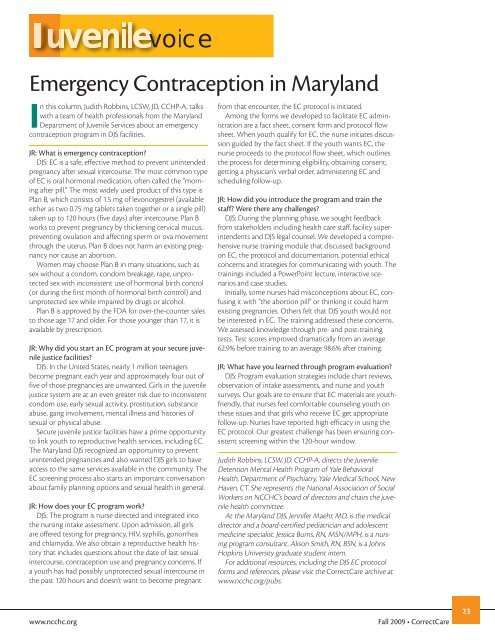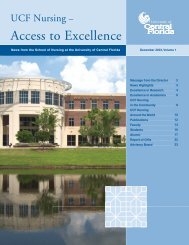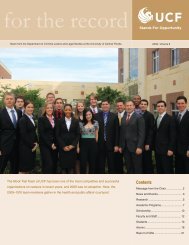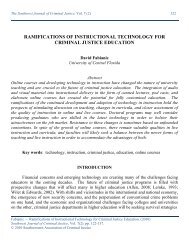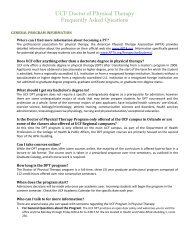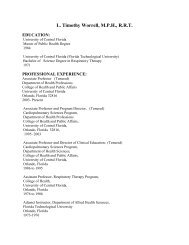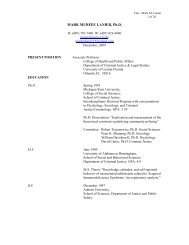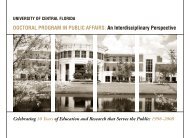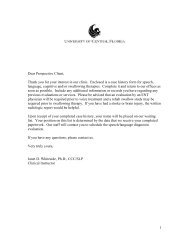Fall - National Commission on Correctional Health Care
Fall - National Commission on Correctional Health Care
Fall - National Commission on Correctional Health Care
You also want an ePaper? Increase the reach of your titles
YUMPU automatically turns print PDFs into web optimized ePapers that Google loves.
JuvenilevoiceEmergency C<strong>on</strong>tracepti<strong>on</strong> in MarylandIn this column, Judith Robbins, LCSW, JD, CCHP-A, talkswith a team of health professi<strong>on</strong>als from the MarylandDepartment of Juvenile Services about an emergencyc<strong>on</strong>tracepti<strong>on</strong> program in DJS facilities.JR: What is emergency c<strong>on</strong>tracepti<strong>on</strong>?DJS: EC is a safe, effective method to prevent unintendedpregnancy after sexual intercourse. The most comm<strong>on</strong> typeof EC is oral horm<strong>on</strong>al medicati<strong>on</strong>, often called the “morningafter pill.” The most widely used product of this type isPlan B, which c<strong>on</strong>sists of 1.5 mg of lev<strong>on</strong>orgestrel (availableeither as two 0.75 mg tablets taken together or a single pill)taken up to 120 hours (five days) after intercourse. Plan Bworks to prevent pregnancy by thickening cervical mucus,preventing ovulati<strong>on</strong> and affecting sperm or ova movementthrough the uterus. Plan B does not harm an existing pregnancynor cause an aborti<strong>on</strong>.Women may choose Plan B in many situati<strong>on</strong>s, such assex without a c<strong>on</strong>dom, c<strong>on</strong>dom breakage, rape, unprotectedsex with inc<strong>on</strong>sistent use of horm<strong>on</strong>al birth c<strong>on</strong>trol(or during the first m<strong>on</strong>th of horm<strong>on</strong>al birth c<strong>on</strong>trol) andunprotected sex while impaired by drugs or alcohol.Plan B is approved by the FDA for over-the-counter salesto those age 17 and older. For those younger than 17, it isavailable by prescripti<strong>on</strong>.JR: Why did you start an EC program at your secure juvenilejustice facilities?DJS: In the United States, nearly 1 milli<strong>on</strong> teenagersbecome pregnant each year and approximately four out offive of those pregnancies are unwanted. Girls in the juvenilejustice system are at an even greater risk due to inc<strong>on</strong>sistentc<strong>on</strong>dom use, early sexual activity, prostituti<strong>on</strong>, substanceabuse, gang involvement, mental illness and histories ofsexual or physical abuse.Secure juvenile justice facilities have a prime opportunityto link youth to reproductive health services, including EC.The Maryland DJS recognized an opportunity to preventunintended pregnancies and also wanted DJS girls to haveaccess to the same services available in the community. TheEC screening process also starts an important c<strong>on</strong>versati<strong>on</strong>about family planning opti<strong>on</strong>s and sexual health in general.JR: How does your EC program work?DJS: The program is nurse directed and integrated intothe nursing intake assessment. Up<strong>on</strong> admissi<strong>on</strong>, all girlsare offered testing for pregnancy, HIV, syphilis, g<strong>on</strong>orrheaand chlamydia. We also obtain a reproductive health historythat includes questi<strong>on</strong>s about the date of last sexualintercourse, c<strong>on</strong>tracepti<strong>on</strong> use and pregnancy c<strong>on</strong>cerns. Ifa youth has had possibly unprotected sexual intercourse inthe past 120 hours and doesn’t want to become pregnantfrom that encounter, the EC protocol is initiated.Am<strong>on</strong>g the forms we developed to facilitate EC administrati<strong>on</strong>are a fact sheet, c<strong>on</strong>sent form and protocol flowsheet. When youth qualify for EC, the nurse initiates discussi<strong>on</strong>guided by the fact sheet. If the youth wants EC, thenurse proceeds to the protocol flow sheet, which outlinesthe process for determining eligibility, obtaining c<strong>on</strong>sent,getting a physician’s verbal order, administering EC andscheduling follow-up.JR: How did you introduce the program and train thestaff? Were there any challenges?DJS: During the planning phase, we sought feedbackfrom stakeholders including health care staff, facility superintendentsand DJS legal counsel. We developed a comprehensivenurse training module that discussed background<strong>on</strong> EC, the protocol and documentati<strong>on</strong>, potential ethicalc<strong>on</strong>cerns and strategies for communicating with youth. Thetrainings included a PowerPoint lecture, interactive scenariosand case studies.Initially, some nurses had misc<strong>on</strong>cepti<strong>on</strong>s about EC, c<strong>on</strong>fusingit with “the aborti<strong>on</strong> pill” or thinking it could harmexisting pregnancies. Others felt that DJS youth would notbe interested in EC. The training addressed these c<strong>on</strong>cerns.We assessed knowledge through pre- and post-trainingtests. Test scores improved dramatically from an average62.9% before training to an average 98.6% after training.JR: What have you learned through program evaluati<strong>on</strong>?DJS: Program evaluati<strong>on</strong> strategies include chart reviews,observati<strong>on</strong> of intake assessments, and nurse and youthsurveys. Our goals are to ensure that EC materials are youthfriendly,that nurses feel comfortable counseling youth <strong>on</strong>these issues and that girls who receive EC get appropriatefollow-up. Nurses have reported high efficacy in using theEC protocol. Our greatest challenge has been ensuring c<strong>on</strong>sistentscreening within the 120-hour window.Judith Robbins, LCSW, JD, CCHP-A, directs the JuvenileDetenti<strong>on</strong> Mental <strong>Health</strong> Program of Yale Behavioral<strong>Health</strong>, Department of Psychiatry, Yale Medical School, NewHaven, CT. She represents the <str<strong>on</strong>g>Nati<strong>on</strong>al</str<strong>on</strong>g> Associati<strong>on</strong> of SocialWorkers <strong>on</strong> NCCHC’s board of directors and chairs the juvenilehealth committee.At the Maryland DJS, Jennifer Maehr, MD, is the medicaldirector and a board-certified pediatrician and adolescentmedicine specialist. Jessica Burns, RN, MSN/MPH, is a nursingprogram c<strong>on</strong>sultant. Alis<strong>on</strong> Smith, RN, BSN, is a JohnsHopkins University graduate student intern.For additi<strong>on</strong>al resources, including the DJS EC protocolforms and references, please visit the Correct<strong>Care</strong> archive atwww.ncchc.org/pubs.www.ncchc.org<str<strong>on</strong>g>Fall</str<strong>on</strong>g> 2009 • Correct<strong>Care</strong>23


